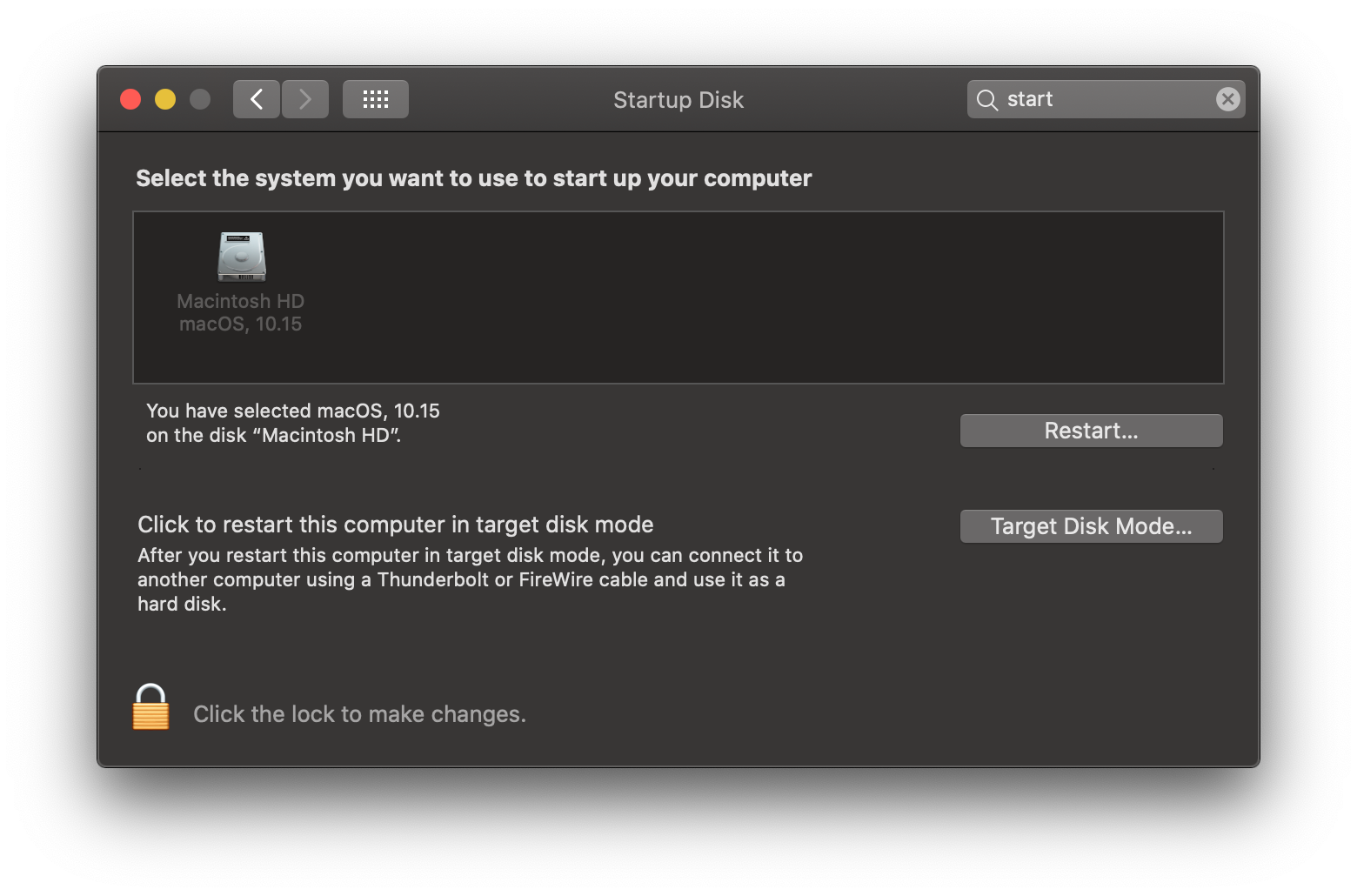Follow the on-screen instructions to reinstall macOS Catalina. Downgrade macOS Big Sur with a macOS Catalina bootable installer. If you have some trouble with the above two ways, you can try to downgrade macOS Big Sur via creating a macOS Catalina bootable installer. Step 6: Clean install macOS 11 Big Sur. Finally, here’s how to do a clean install of macOS using your USB installer drive: Restart your computer and hold down Option. Go back to the initial screen of Disk Utility. Choose to install macOS from the connected USB drive. Click on Install macOS to confirm your action.

The MacOS Big Sur upgrade, while filled with enhancements, is not without its difficulties: Users have encountered a range of bugs, consisting of issues that temporarily bricked their Macs, video porting issues, unexpected slowdowns, and more. Some users have preferred to return to MacOS Catalina totally, and wait till all the major bugs with Big Sur have been dealt with.
If that explains you, there is a way to roll back Big Sur and go back to the more pleasant Catalina OS, although it does take the right procedure. Here’s what you require to do.
Action 1: Back up your data
If you haven’t currently done so, now is the time to back up your information. You can always utilize Time Maker to back up data on a Mac, but buggy os can make Time Machine tough to use, so it’s wise to

find a backup approach that doesn’t rely on MacOS. An external hard drive can be found in extremely beneficial here. If you have great deals of iCloud area, you can likewise keep all important files in iCloud for simple retrieval if needed. Oh, and if you’re on a MacBook, this is also a good time to plug your Mac into a power source and established where you can remain for a while.
Action 2: Close down and go into Healing mode
Close all your apps, and finish a complete shutdown for your Mac. You can either push the physical power button or select the upper-left Apple icon and pick Shut Down to start. Your Mac may take a while to completely turn off. If a bug turns up and freezes your Mac during this procedure, hold down the power button for a number of seconds to force a shutdown.
When your Mac is off, disconnect any devices except for your mouse and keyboard. Then press the power button to turn it back on. When your Mac is powering up, immediately press and hold the Command and R keys, up until you see the Apple logo appear. Now release those keys, and your Mac needs to go into Recovery mode. You will know this worked if you see the window called MacOS Utilities appear.
Keep in mind: If you have a Mac with an Apple silicon chip, pushing and holding the power button should take you to a start-up menu, where you ought to choose Options rather.
Action 3: Try To Find a Time Machine backup
< img src=' image/gif; base64, R0lGODlhAQABAIAAAAAAAP /// yH5BAEAAAAALAAAAAABAAEAAAIBRAA7″alt =””/ > Examine MacOS Utilities. The very first choice ought to be to Bring Back from Time Machine Backup. Start by picking this option, then choosing Continue, and your Mac
will search for at any time Machine copies of your OS. Here’s where things get a little difficult: If you understand you have a Time Maker copy and it is stored on an external disk drive, you need to plug in that external drive before selecting this alternative. If you aren’t sure if you set Time Device to make regular copies, let your Mac search and see what it discovers.

If your Mac does return a Time Maker backup, take a look at what operating system it is and the date of its creation. You will desire a Time Device backup from right before you set up Huge Sur. If a copy appears like what you need, pick it, and pick a destination disk where the backup will be stored. Then choose Bring back, and choose Continue when prompted. You might be asked to choose classifications of information to restore– if so, merely pick all of them.
Step 4: Use the Reinstall MacOS alternative as an alternative
If you have not been utilizing Time Device and do not have any backups, there’s still another alternative you can attempt. Back out to MacOS Utilities, and this time pick the Reinstall MacOS choice. Select Continue, and enter your Apple ID. Your Mac will then search for a web connection, which is required for the reinstall process. If your Mac is having problem linking to Wi-Fi, you might require to run an Ethernet cable television from your router to your Mac for a wired connection.
Essential note: This process is effective if Huge Sur is having problem booting up after a buggy installation. If Big Sur is already set up and you have actually been using it, it might just get reinstalled again– which isn’t what we desire. There are ways around this!
- First, attempt starting up in Healing mode once again, this time utilizing the Alt + Command + R secrets. This should make sure the Reinstall alternative is set to the variation of MacOS that your Mac came with. If you have a Mac that is only a years of age or so, this ought to be MacOS Catalina, which fixes your problem.
- If your only option is to re-install Big Sur, you will require to produce a bootable installer with MacOS Catalina instead, and utilize it as a start-up disk. Apple has particular directions for this procedure, which is not complicated however will need a 12GB flash drive to work.
When your Mac begins reinstalling MacOS Catalina, it’s going to take an hour or two to complete, so stay patient. Fortunately is that your files and apps– unless corrupted– must be conserved and ready after your Mac is done.
Step 5: Remove your Start-up Disk if essential
If you have actually attempted everything but your Mac is still experiencing serious breakdowns that make it unusable, you ought to try erasing the startup disk entirely. Pick Disk Energy at the MacOS Utilities menu, choose Continue, and after that pick your Startup Disk from the menu options. Not sure which disk it is? If your Mac is still functional, you can go to System Choice and select Startup Disk to have a look.
Now select Erase. Your Mac will let you pick which format you wish to utilize– select APFS. If inquired about partitioning, select GUID Partition Map. Verify the process, and the startup drive will be erased, enabling a cleaner MacOS Catalina set up. Since lots of Mac setups use an additional disk for storing individual files, these might largely remain intact.

Editors’ Suggestions
New things are always exciting and they definitely give us an adrenaline rush trying them. Somehow, not all new things are a perfect fit for us. This might be the case with macOS 11 Big Sur. You definitely switched from your previous MacOS Catalina to the new enhanced MacOS 11 Big Sur and after your high, you realized that you were perfectly comfortable with MacOS Catalina. It’s not too late, you can still seamlessly downgrade to Catalina without losing any of your data.
Here is how you can downgrade seamlessly in 5 simple steps;
First backup your data
You will need to back up your accumulated data since the upgrade. You might have used the MacOS 11 Big Sur for a short while but this step is important nevertheless and this is something very important when you are doing downgrade from big sur to catalina.
To do this you may first need to clean your system so you can retain only important files. CleanMyMac X can help you accomplish this by getting rid of unseen junk and clearing your accumulated clutter and this is something very important and should be done well. There are many people who are not sure about how it is done and regret it later and you should try and avoid being there and so be careful once you are doing the downgrade from big sur to Catalina.
Once done, you can now backup your cleaned data using the Time machine tool or an external backup tool like getting Backup Pro.
Time Machine backup.
- Backup your data by opening the system preferences and select Back up and this is something very important and you should never ignore it and if you do that then there could be an issue and that is the last thing that you want. Things need to be done in the right way to avoid any kind of issue and you will not have an issue.
- Select the drive for use and you are good to go.
Install macOS Catalina on an external drive
Before you can uninstall Big Sur, you first have to install macOS Catalina on an external drive. Some older models of Mac that do not use M1 chip might have problems with booting files. To surpass this hitch, allow booting from an external media before you downgrade. This is something important and you should look for doing it the correct way and once you do that then there will be no problem at all for anyone which is something very important and should not be ignored at all and one has to take things into consideration in the right way which is something very important and should not be looked anywhere else which is something very important.
Once you have booted your Mac externally, you can get back Catalina by simply downloading it from the App store. Thereafter, install macOS Catalina on a formatted external drive and should be done in the right way for a good result.
Erase macOS Big Sur
How Do I Reinstall Catalina From Big Sur
You have finally downloaded Catalina? Now it’s time to get back to your comfortable MacOS and say bye to Big Sur. Erase macOS Big Sur from your hard drive.
Reinstall macOS Catalina on your Mac
How To Downgrade Big Sur To Catalina
You can now run a downgrade to Catalina by reinstalling it on Mac. For this to happen you need to ensure you are connected to the internet.
- Insert your bootable external drive into your Mac then select restart on the menu.
- Hold down options while your Mac restarts, a list of startup disks will appear, choose the bootable drive with macOS Catalina and select continue.
- Finally, agree to the licensing T & Cs then wait for Catalina to reinstall
Restore data
The final step is to restore the data that you had backed up. Depending on what you had used, this is how you restore your data:
Time Machine Backup
- Restart your Mac then hold down Command + R to initiate recovery.
- Access utilities then restore from Time Machine Backup and continue.
- Select the backup source then proceed to back up and wait for your data to be restored.
After data restoration, your Mac will reboot.
How To Reinstall Catalina From Big Sur
For Get Backup Pro, you just have to launch the app then select backup and restore your data to a location of your choice. All your data will be restored on MacOS Catalina and you are all set with a smooth downgrade on your sleeve.